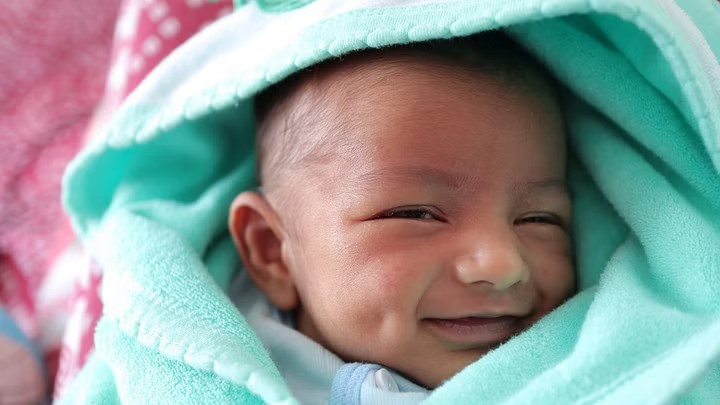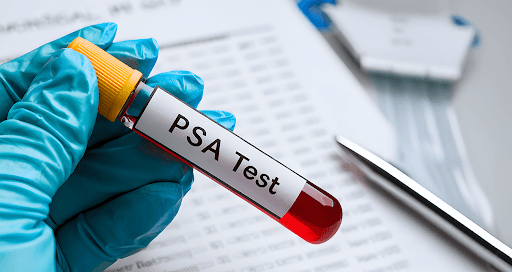
While most breast cancers occur by chance, around 5 % to 10 % of the cases of breast cancer are linked to hereditary genetic mutations. These inherited mutations can significantly increase the likelihood of developing breast and other related cancers. Understanding the role of genes, especially that of BRCA 1 and BRCA 2, helps individuals make informed decisions about the screenings, prevention, and treatment.
So if you’ve also ever wondered, “ Is breast cancer hereditary?”, the answer lies in your genes.
Hereditary Breast Cancer: Understanding Your Genetic Risk
Most cases of breast cancer happen by chance, but in some families, the risk is passed from one generation to the next through changes in certain genes. Knowing whether breast cancer runs in your family can help you make informed choices about screening, prevention, and even treatment.
Let’s break down what hereditary breast cancer means, who may be at risk, and what steps you can take if it’s a concern for you or your family.
What Does “Hereditary” Mean?
When breast cancer is hereditary, it means that the risk is caused by a gene change (mutation) that can be passed from parent to child. These inherited mutations account for about 5–10% of all breast cancer cases.
In most people, our genes help control how our cells grow and repair DNA. But when certain genes don’t work properly, cells can become damaged and grow out of control — which can lead to cancer.
What is Gene Mutation?
To understand breast cancer, it helps to first know what the gene mutation is.
Genes are like instruction manuals written in our DNA. They tell our cells how to grow, divide, and function. A gene mutation happens when there is a change or error in the DNA sequence. These changes can alter how a gene works, sometimes only slightly, but yet other times, in ways that increase the risk of diseases like cancer.
According to the National Cancer Institute(NCI), a mutation can involve:
- The deletion or addition of DNA building blocks
- The replacement of one DNA letter(nucleotide) with another, or
- A large-scale change affecting the parts of a chromosome.
Some mutations occur naturally over time, through ageing or environmental exposure(like radiation or tobacco), and are called acquired mutations. Others are inherited, meaning they are passed down from parent to child through the egg or sperm. These are known as germline mutations and are present in every cell of the body from birth.
How Inherited Gene Mutations Increase Cancer Risk
Inherited mutations are what doctors refer to when they talk about “hereditary cancers.” When specific genes that normally protect cells from becoming cancerous, such as BRCA1 and BRCA2, are mutated, they can no longer perform their DNA repair function effectively. This failure allows DNA damage to accumulate over time, which may eventually lead to the uncontrolled cell growth seen in cancer.
As Johns Hopkins Medicine explains, “Women who inherit harmful mutations in the BRCA1 or BRCA2 gene have a much higher lifetime risk of developing breast and ovarian cancers than those without these mutations.”
To put it simply —
A gene mutation doesn’t mean you have cancer, but it can increase your body’s tendency to develop it if the altered gene affects crucial protective mechanisms.
Understanding your genetic makeup through genetic testing can help identify these risks early, enabling preventive care and timely monitoring.
The Most Common Genes Involved
Two genes play a major role in hereditary breast and ovarian cancer:
- BRCA1 and BRCA2
Mutations in these genes greatly increase the risk of developing breast cancer — and can also raise the risk of ovarian, prostate, and pancreatic cancers.
Women with a BRCA1 or BRCA2 mutation can have up to a 45–70% lifetime risk of developing breast cancer, compared to a 13% average risk for women in the general population.
Other genes, while less common, can also increase breast cancer risk. These include:
- PALB2 – works closely with BRCA2 to repair damaged DNA
- CHEK2 and ATM – involved in detecting DNA damage and coordinating repairs
- TP53 and PTEN – linked to rare inherited cancer syndromes
Could Breast Cancer Run in Your Family?
You might be at higher risk for a hereditary gene mutation if you notice patterns like:
- Several relatives on the same side of the family with breast, ovarian, or prostate cancer
- Breast cancer diagnosed before age 50
- A relative with triple-negative breast cancer (lacking estrogen, progesterone, and HER2 receptors)
- A male relative with breast cancer
- Ashkenazi Jewish heritage (mutations are more common in this group)
- Someone in your family known to carry a BRCA or related mutation
If this sounds familiar, you may want to talk to your healthcare provider about genetic counseling and testing.
What Is Genetic Counseling and Testing?
Genetic counseling is the best first step toward understanding your hereditary risk. A genetic counselor is a healthcare professional specially trained to discuss family history and help you decide whether testing is right for you.
- Counseling: During this session, you’ll review your family’s medical history and discuss what genetic testing can tell you.
- Testing: If you choose to proceed, testing is usually done with a blood or saliva sample. The lab looks for known mutations in breast cancer–related genes.
- Results and support: Your counselor will explain what the results mean for you and your family — and guide you on next steps, whether that’s increased screening, lifestyle adjustments, or preventive options.
What to Do If You Test Positive for a BRCA or Other Genetic Mutation?
Knowing you carry a gene mutation can feel overwhelming — but it also allows you to take control of your health. Depending on your risk level and preferences, doctors may recommend one or more of the following:
- More frequent screening: Yearly mammograms or breast MRIs starting at a younger age
- Risk-reducing medications: Certain prescription drugs can lower breast cancer risk for some women
- Preventive surgery: Some high-risk individuals choose to remove breast tissue or ovaries to reduce cancer risk significantly
- Healthy lifestyle habits: Staying active, maintaining a healthy weight, limiting alcohol, and not smoking all support breast health
Your healthcare team will help you decide which approach is best for you.
Common Genetic Mutations Linked to Breast Cancer
When people ask, “ Is breast cancer hereditary?”, doctors often point to specific gene mutations that can be passed down through families. These mutations affect how the body repairs damaged DNA, making it easier for cancer cells to develop and multiply.
The most well-known breast cancer genes are BRCA1 and BRCA2, but researchers have identified several others that may also play a role in the inherited risk of developing breast cancer. According to Breastcancer.org and Johns Hopkins Medicine, understanding these genes helps doctors recommend appropriate genetic testing for breast cancer and guide preventative care for those at higher risk.
Below are some of the key genes linked to hereditary breast cancer:
1. BRCA1 (Breast Cancer gene 1)
Mutations in the BRCA1 gene are among the most common causes of hereditary breast and ovarian cancers. This gene normally helps repair damaged DNA, but when it’s mutated, that repair system fails.
- Women with a BRCA1 mutation may have a 65%–80% lifetime risk of developing breast cancer.
- It’s also associated with ovarian cancer and, to a lesser extent, pancreatic and prostate cancer.
(Source: Johns Hopkins Medicine)
2. BRCA2 (Breast Cancer Gene Two)
Similar to BRCA1, the BRCA2 gene also controls DNA repair. When a BRCA2 mutation is present, it increases breast cancer risk to 45%–70%, with a higher tendency for male breast cancer as well.
A BRCA test can identify these mutations, helping families understand whether they are genetically predisposed to breast or ovarian cancers.
3. PALB2
Known as the “partner and localizer of BRCA2,” the PALB2 gene works closely with BRCA2 in DNA repair. When mutated, it increases the risk of breast cancer five to nine times higher than in women without the mutation.
4. PTEN
Mutations in PTEN are associated with Cowden syndrome, a rare inherited condition that predisposes individuals to breast, thyroid, and endometrial cancers.
5. TP53
The TP53 gene, often called the “guardian of the genome,” helps control cell division. A TP53 mutation causes a rare condition called Li-Fraumeni syndrome, which raises the risk of several cancers — including breast, brain, and bone — often starting in childhood or young adulthood.
6. ATM
The ATM gene helps fix broken DNA strands. A mutation in this gene can double or triple breast cancer risk and is sometimes linked to increased sensitivity to radiation.
7. CDH1
Mutations in CDH1 are associated with invasive lobular carcinoma, a specific type of breast cancer. They also increase the risk of hereditary diffuse gastric cancer.
8. CHEK2
This gene helps regulate cell division and repair DNA damage. A CHEK2 mutation modestly raises breast cancer risk and has been connected to colon and thyroid cancers as well.
9. STK11
Mutations in STK11 lead to Peutz-Jeghers syndrome, a condition that causes benign polyps in the digestive tract and elevates the risk of breast, pancreatic, and gynecologic cancers.
10. RAD51C and RAD51D
Both genes are involved in repairing double-stranded DNA breaks. Mutations in RAD51C or RAD51D are rare but increase susceptibility to breast and ovarian cancers, particularly in families with multiple affected members.
11. BARD1
The BARD1 gene works alongside BRCA1 in repairing damaged DNA. Although its role is less prominent, a BARD1 mutation may contribute to breast cancer risk, especially in women with a family history of early-onset disease.
Why These Genes Matter?
Identifying these mutations through genetic testing for breast cancer gives individuals valuable insight into their health. If a harmful BRCA mutation or another high-risk gene is found, healthcare professionals can recommend:
- Earlier and more frequent screenings
- Preventive medications, or
- Risk-reducing surgeries (such as prophylactic mastectomy or oophorectomy).
By knowing your BRCA gene status and understanding your family history, you can take preventive steps long before cancer develops.
(Sources: National Cancer Institute, Johns Hopkins Medicine, Breastcancer.org, World Journal of Surgical Oncology)
Assessing Family History and Genetic Risk
Understanding your family history is a key step in evaluating your risk for hereditary breast cancer. Doctors often look for patterns in relatives to determine whether a genetic mutation, such as a BRCA mutation, might be present.
Key Factors in Family History Assessment
A strong family history doesn’t automatically mean you carry a BRCA gene mutation, but certain red flags increase the likelihood of it. According to the National Cancer Institute (NCI) and Johns Hopkins Medicine, these are some of the most important factors your doctor will look for:
1. Multiple Relatives Diagnosed with Breast or Ovarian Cancer
If several members of your family, particularly first-degree relatives like your mother, sister, or daughter, have had breast or ovarian cancer, it may point to a hereditary link.
2. Early-Onset Cancer in the Family
Breast cancer that appears before the age of 50 is more likely to be associated with a genetic mutation, such as in the BRCA1 or BRCA2 genes.
3. Male Breast Cancer in the Family
Breast cancer in men, though rare, is often linked to BRCA2 mutations. Having a male relative with breast cancer is a strong indicator for genetic testing for breast cancer.
4. Individuals with Multiple Cancers
When one person develops more than one type of cancer, for example, both breast and ovarian cancer, or bilateral breast cancer (cancer in both breasts), it can suggest an underlying genetic cause.
5. Family History of Related Cancers
Certain cancers tend to occur together in families carrying BRCA or other mutations. These may include prostate, pancreatic, or colon cancers, alongside breast and ovarian cancers.
6. Known BRCA or Other Genetic Mutation in the Family
If a family member has already tested positive for a BRCA mutation or another cancer-related gene mutation, genetic testing can help determine whether you’ve inherited the same risk.
The medical background of your family provides essential clues to your cancer risk. By assessing these factors, healthcare providers can determine whether you might benefit from a BRCA test or broader genetic testing for breast cancer.
Understanding your genetic background not only facilitates early detection but also enables preventive care, including targeted screenings and proactive risk-reduction strategies.
(Sources: National Cancer Institute, Johns Hopkins Medicine, Breastcancer.org, Narayana Health)
Why This Information Matters?
Understanding hereditary breast cancer is not just about finding out if you’re at risk — it’s about making proactive, informed decisions. Advances in genetics and personalized medicine now make it possible to prevent or detect cancer early, when it’s most treatable.
If you’re concerned about your family history, discuss it with your doctor. Early awareness and testing can protect not only your health but also that of your loved ones.
When to Suspect Breast Cancer?
You may suspect hereditary breast cancer if there's a pattern of early-onset breast cancer(before age 45-50), multiple relatives affected by breast or ovarian cancer, male breast cancer, or cancer in both breasts within the family. A family history involving breast, ovarian, pancreatic, or prostate cancers, or a known BRCA mutation, also raises suspicion.
People of Ashkenazi Jewish ancestry are at higher risk for carrying these mutations, according to the National Cancer Institute and Johns Hopkins Medicine.
Identifying hereditary risk early through genetic counselling and BRCA testing can make a major difference. While carrying a BRCA mutation doesn’t guarantee cancer, it helps doctors guide preventive steps such as enhanced screening, prophylactic surgery, or targeted lifestyle changes.
As experts from Johns Hopkins Breast Cancer Program highlight, understanding your genetic risk empowers you to take proactive control of your health and detect potential issues well before they advance.
Risk Factors for BRCA Gene Mutation
Certain factors can increase the likelihood of carrying the BRCA gene mutation, which is strongly linked to hereditary breast and ovarian cancers. The most significant factor is having a family history of breast, ovarian, prostate, or pancreatic cancer, particularly if these occurred at a young age( before 50) or across multiple generations.
Other red flags include having male relatives with breast cancer, triple-negative breast cancer (diagnosed before age 60), or a known BRCA mutation in the family. While anyone can carry a BRCA mutation, those with a strong familial or ethnic predisposition are at the greatest risk. Genetic counselling and testing are therefore essential for individuals meeting these criteria, helping to identify risk early and guide personalised prevention strategies.
Reducing Risk for Those with Hereditary Mutations
For individuals who carry hereditary mutations like BRCA1, BRCA2, or other high-risk genes, understanding how to reduce risk is crucial. While you can’t change your genes, you can take proactive steps to lower your risk and detect problems early. Regular genetic counselling and enhanced screening, such as annual MRI and mammogram, starting at an earlier stage, can help catch cancer in its earliest, most treatable stages.
Some people may consider risk-reducing surgeries, such as preventive mastectomy or ovary removal( salpingo-oophorectomy), which have been shown to significantly lower the chances of developing breast and ovarian cancers, according to the National Cancer Institute and Johns Hopkins Medicine.
Lifestyle changes can also play a meaningful role. Maintaining a healthy weight, engaging in regular physical activity, limiting alcohol intake, and avoiding tobacco can all help reduce the risk of cancer. In some cases, chromoprevention, using medications, may be recommended for women at a higher risk.
Ultimately, combining medical interventions with healthy living and consistent follow-up care provides the best protection for those with hereditary breast cancer mutations.
Take Control Before Cancer Takes Control
Knowing your genetic risk, especially if you carry BRCA1, BRCA2, or other high-risk mutations, gives you the power to act before cancer develops. While having a hereditary mutation doesn’t guarantee cancer, it highlights the importance of early detection, preventive measures, and regular monitoring.
By combining genetic counselling, enhanced screening, lifestyle adjustments, and, when appropriate, risk-reducing surgery, individuals can significantly reduce their chances of developing cancer.
Don’t wait for cancer to make the first move. Discover your genetic risk with a BRCA test and expert counselling at Amrita Hospital, Faridabad. Our team of oncologists provides personalised prevention strategies, early detection plans, and cutting-edge care so you can stay one step ahead. Book your consultation today and protect your tomorrow.
FAQ: Hereditary Breast Cancer
1. Can breast cancer be hereditary?
Yes. While most breast cancers occur randomly, about 5–10% are hereditary, caused by gene mutations passed from parents to children. The most common genes linked to hereditary breast cancer are BRCA1 and BRCA2. (Sources: Johns Hopkins Medicine, Breastcancer.org)
2. How to avoid hereditary cancer?
You cannot change your genes, but you can reduce risk through:
- Early and regular screenings (mammograms, MRIs)
- Preventive medications, if recommended
- Lifestyle changes such as a healthy diet, exercise, and limiting alcohol
- Risk-reducing surgery for high-risk individuals
- Genetic counselling and BRCA testing to guide personalised strategies
(Sources: National Cancer Institute, Johns Hopkins Medicine)
3. What is the life expectancy of someone with a BRCA mutation?
Carrying a BRCA mutation does not guarantee cancer, and life expectancy depends on early detection and preventive measures. With regular monitoring, timely interventions, and lifestyle adjustments, individuals with BRCA mutations can live long, healthy lives.
4. Which cancers can be hereditary?
Breast, ovarian, pancreatic, prostate, thyroid, and some gastric cancers may have hereditary links, especially when they occur early in life or across multiple family members.
5. Can hereditary breast cancer be prevented?
It cannot be completely prevented, but risk can be significantly reduced through genetic counselling, early detection, preventive surgery, medications, and lifestyle modifications. Early awareness and action are key to protection.







